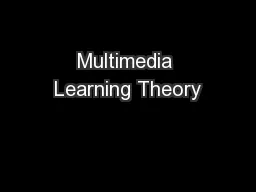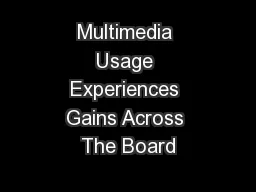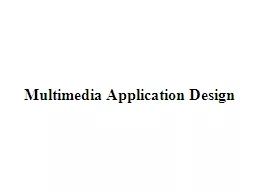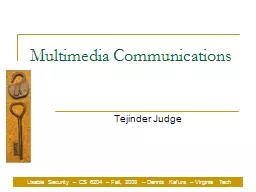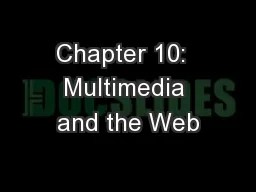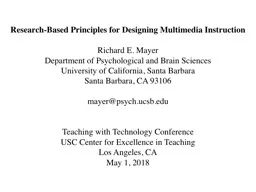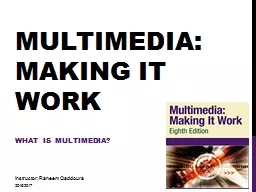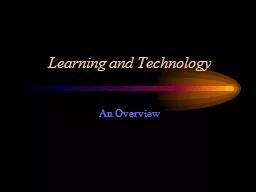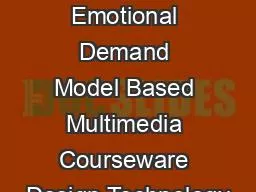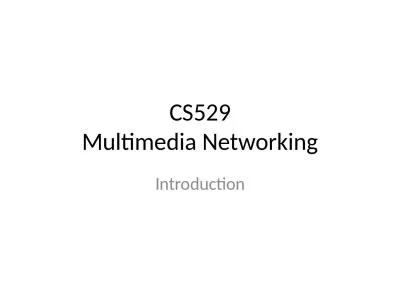PPT-Multimedia Learning Theory
Author : yoshiko-marsland | Published Date : 2018-03-13
Tommy Gober MS LeTourneau University Rich Mayer PhD Professor of Psychology University of California Santa Barbara Research science of learning Father of Multimedia
Presentation Embed Code
Download Presentation
Download Presentation The PPT/PDF document "Multimedia Learning Theory" is the property of its rightful owner. Permission is granted to download and print the materials on this website for personal, non-commercial use only, and to display it on your personal computer provided you do not modify the materials and that you retain all copyright notices contained in the materials. By downloading content from our website, you accept the terms of this agreement.
Multimedia Learning Theory: Transcript
Download Rules Of Document
"Multimedia Learning Theory"The content belongs to its owner. You may download and print it for personal use, without modification, and keep all copyright notices. By downloading, you agree to these terms.
Related Documents

